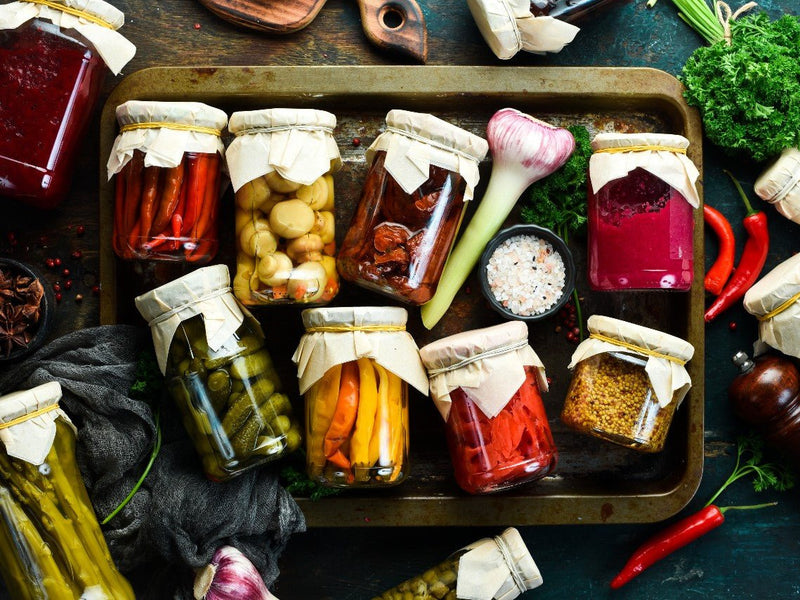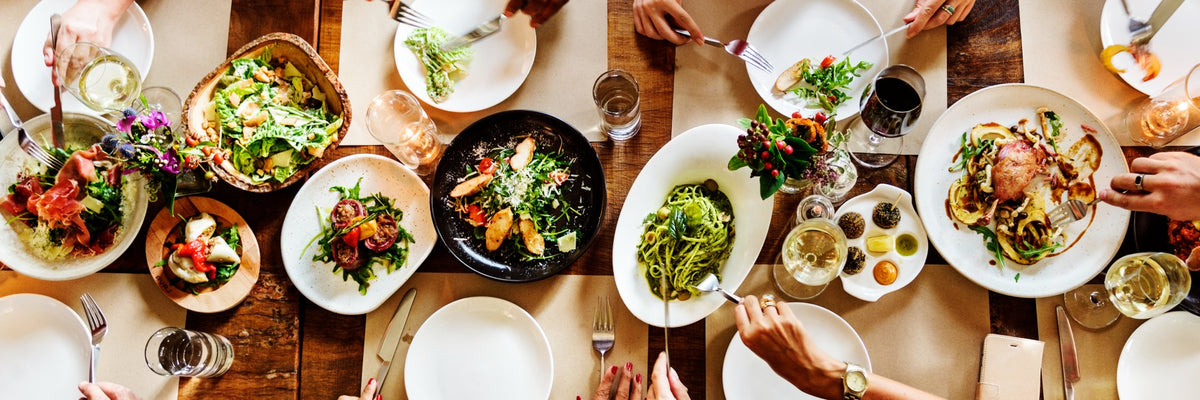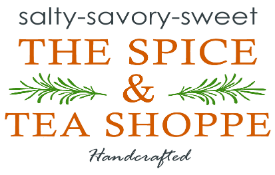
Let's get pickled!
Pickling is an ancient preservation technique that not only extends the shelf life of vegetables but also adds a burst of complex flavors to your dishes. Whether you're a seasoned pickler or a curious beginner, we will explore some of the many different vegetables that can be pickled, and the spices you use can really make the dish your own.
The Basics of Pickling:
Pickling: A Historical Preservation Technique:
Pickling became increasingly popular in Europe during the Middle Ages, as it was a way to preserve food during the long winter months. Pickled vegetables were often used as a source of vitamins and minerals during times of famine. In the 16th century, pickling spread to the Americas, where it was adopted by Native American tribes who had been using others methods of preservation such as fermentation, smoking and dehydrating for millennia.
Pickling continued to be an important preservation method throughout the centuries. In the 19th century, it was used to preserve food for sailors on long voyages. In the 20th century, pickling became popular to add flavor and acidity to dishes and was a staple during the Depression Era because it was cheap, and ingredients were widely available. Homemakers during the Depression were known for their pickling of cucumbers, carrots, beans, cauliflower, onions, okra, squash, beets, asparagus, and brussels sprouts. Relish, a mixture of chopped vegetables, was used to spice up dinners during the winter.
Pickling was a necessity throughout history because it was the best way to preserve food for a long period of time and was one of the earliest mobile foods, filling the stomachs of hungry sailors and travelers and providing families with a source of food during the cold winter months. Today, pickling is enjoyed all over the world as a delicious and healthy way to preserve vegetables.
Did you know?
The Chinese were the first to use vinegar for pickling, and they developed a variety of pickled vegetables, including cucumbers, cabbage, and lotus root.
The Romans were also known for their pickled vegetables, and they developed a technique for pickling fish called garum. Garum was a popular condiment in ancient Rome, and it was made from fermented fish, shellfish, and spices.
Pickled vegetables were an important part of the diet of the Vikings, and they used a variety of spices to flavor their pickles, including garlic, ginger, and horseradish.
Pickled vegetables were also popular during the American Civil War, as they were a way to preserve food during the war.
Pickling Around the World - Global Flavors in Pickling:
Middle Eastern Traditions:
The Middle East has long been celebrated for its pickling traditions. In Lebanon, pickled turnips add a tangy crunch to traditional dishes. Sumac, an essential spice in Middle Eastern cuisine, is often incorporated into pickling, enhancing the flavors of vegetables.
Asian Delights:
From the spicy Kimchi of Korea to the refreshing Japanese pickles known as Tsukemono, Asian cultures have perfected the art of pickling. The vibrant colors and bold flavors of Asian pickles are a testament to their centuries-old culinary heritage. Explore the simplicity of Japanese pickling with cucumbers, rice vinegar, and a touch of soy sauce. Add some toasted sesame seeds and ginger slices for a delightful twist that captures the essence of Japanese cuisine. No pickle guide is complete without mentioning kimchi. Ferment Napa cabbage with Gochugaru Korean red pepper flakes, garlic, ginger, and fish sauce for a spicy, umami-packed Korean staple that is both delicious and gut-friendly.
Indian Achaar:
In India, pickling is a cherished culinary art form known as "achaar." A wide array of spices, including fenugreek, mustard seeds, and fennel, are used to create pickles with diverse flavors that perfectly complement traditional Indian dishes. Embrace the bold flavors of India by pickling limes with fenugreek seeds, turmeric, cumin, and fennel seeds. This zesty and aromatic lime pickle pairs wonderfully with Indian dishes and adds a burst of flavor to your meals.
European Influence:
Pickling has been a staple in European cuisine for centuries, with each region offering its unique twists. In the UK, pickled onions are a beloved accompaniment to fish and chips, while Germany boasts sauerkraut, a fermented cabbage pickle packed with probiotics.
The Role of Spices and Teas in Pickling:
The key to extraordinary pickles lies in the judicious use of spices and teas, which elevate the flavors to new heights. With our extensive selection of premium spices and teas sourced from around the globe, enriching your pickling adventures is easier than ever.
- The Magic of Cumin: Cumin, with its earthy and warm notes, is a versatile spice that pairs well with a variety of pickled vegetables. Its presence in pickling recipes offers an unmistakable depth to the final product.
- Mustard Seeds: Tiny Flavor Bombs: Mustard seeds are a popular spice in pickling, adding a subtle heat and texture. From yellow to brown and black, each variety brings its unique nuances to the mix.
- Embracing Exotic Flavors with Cardamom, Cinnamon, and Cloves: These flavors add a hint of sweetness to pickled fruits and vegetables. Their aromatic fragrances infuse the brine, leaving a lasting impression on your taste buds.
- The Teatime Connection: Teas are not just for sipping; they can elevate your pickling game too. Try incorporating black tea leaves into your pickling brine to add a rich and smoky undertone to your vegetables. Assam, Darjeeling, Keemum and Lapsang Souchong work well with the later imparting a smokey flavor to the brine.
Which vegetables can be pickled?
Almost any vegetable can be pickled, but some of the most popular options include:
- Cucumbers: Cucumber pickles are a classic for a reason. They are crisp, refreshing, and perfect for sandwiches, salads, and snacks.
- Beets: Pickled beets are excellent in salads, grain bowls, sandwiches and wraps. For a vibrant and sweet pickled beet, use cinnamon sticks, cloves, and allspice berries in addition to the standard pickling spices. This blend will enhance the natural sweetness of the beets, creating a delightful balance of flavors.
- Onions: Pickled onions add a delicious sour and salty flavor to any dish. They are great on burgers, hot dogs, and tacos.
- Carrots: Pickled carrots are a bit more unusual, but they are definitely worth trying. They have a sweet and tangy flavor that is perfect for salads and sandwiches. Add some heat to your pickles by pickling carrots with chili flakes, coriander seeds, and ginger slices. The spiciness of this mix will complement the sweetness of the carrots, making them a perfect addition to salads and sandwiches.
- Green beans: Pickled green beans are a great way to use up extra green beans from the garden. They are crisp and flavorful, and they make a great addition to salads, sandwiches, and charcuterie boards.
- Okra: Pickled okra is a Southern classic. It has a unique slimy texture that some people love and others hate. But if you can get past the texture, you'll be rewarded with a delicious and flavorful pickle.
Tips for Perfect Pickles:
- Use fresh, high-quality vegetables for the best results.
- Experiment with different spice combinations to find your favorite pickling profiles.
- Adjust the salt and sugar levels to suit your taste preferences.
- Let the pickles sit for at least a few days to allow the flavors to meld together.
- Label your jars with the pickling date to keep track of the aging process.
Pickling vegetables with spices from The Spice and Tea Shoppe is a delightful and rewarding culinary experience. With a little creativity and experimentation, you can produce an array of pickled vegetables that will add excitement to your meals and impress your friends and family. So, roll up your sleeves, head to The Spice and Tea Shoppe, and embark on your journey to pickling perfection. Happy pickling!
To learn all about how you can become a pickle master you can download the USDA Complete Guide to Home Canning from our KITCHEN GUIDES - FREE DOWNLOADS on our website.
Let's Get Cooking
For more culinary inspiration, be sure to visit our recipe page. Here, you'll find a diverse collection of delicious recipes for every taste, season and occasion.

